2nd Johor International Open 2015
The 2nd Johor Open International Chess Festival took place from December 13, 2015, to December 23, 2015. The chess festival included one classical event, one blitz event and four back to back rapid events. The Johor Open is annually held in conjunction with Penang Heritage Chess Festival. IM Srinath Narayanan missed the Penang tournament due to the floods that ravaged his city; however, he made it in time for the Johor Open. In his report, Srinath shares his impressions of the tournament with you.
2nd Johor International Open 2015 by IM Srinath Narayanan

The 2nd Johor Open International Chess Festival took place from December 13, 2015, to December 23, 2015. The chess festival included one classical event, one blitz event and four back to back rapid events.
Malaysian tournaments usually feature some of the better players of Asia from the major Asian chess powers like Philippines, Indonesia, Vietnam and, of course, India. To top it all, a Chennai-KL round trip can range as low as Rs.10-13K (inclusive of an extra Rs. 2K for baggage, if you book at the right time). The accommodation and food cost approximately the same as it costs in India. Thus, the cost itself is around the same as travelling from one corner of India to another, however, the exposure is much higher. Simply put, I believe that chess tournaments in Malaysia are excellent for Indian chess players.
The Johor Open is annually held in conjunction with Penang Heritage Chess Festival. This year, there was excellent cooperation between the two organizers and they were kind enough to arrange transport for the players from Penang to Johor. Because of the Chennai floods, I was forced to miss the Penang Open and flew directly to Johor to join the other nine Indians who played in Penang.

Usually, most tournaments take a while to heat up, but due to the forced pairing system prevalent in Malaysian Opens, the very first round saw a clash between the top seed and the defending champion. The forced pairing system comes into play when a player doesn’t turn up in the first round. The arbiter arbitrarily ‘force pairs’ the opponents in a random order.
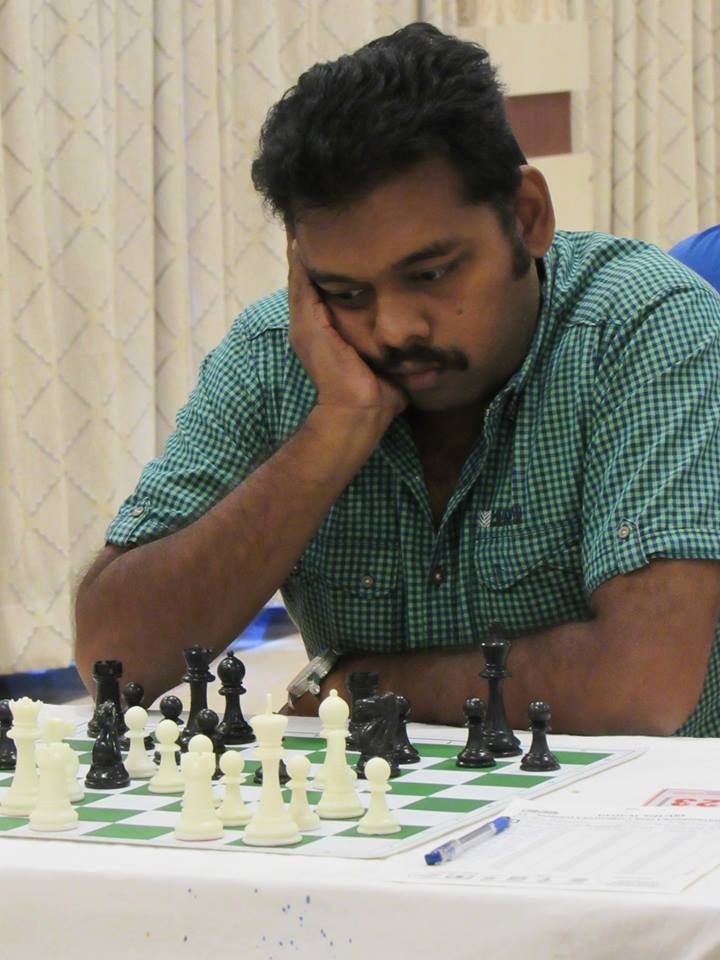
While Deepan, the top seed, was clearly better in the early middlegame phase, he successfully managed to dilute both his positional advantage and advantage on the clock to end up in this position against IM S. Nitin:
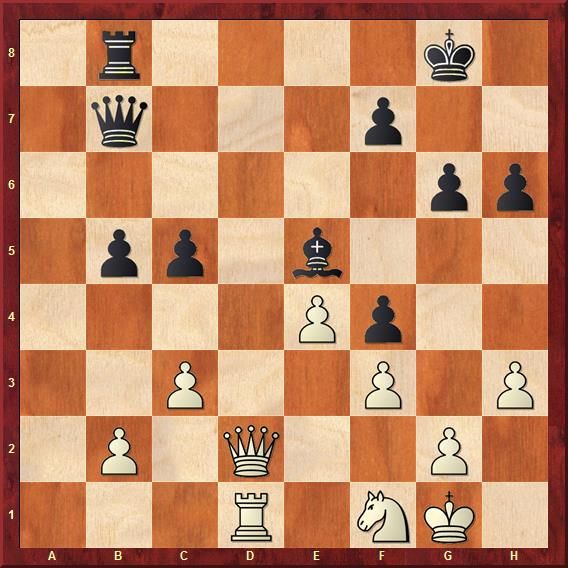
Black stands more comfortable here, but the two heavyweights understandably decided to play it safe, agreeing for a draw.
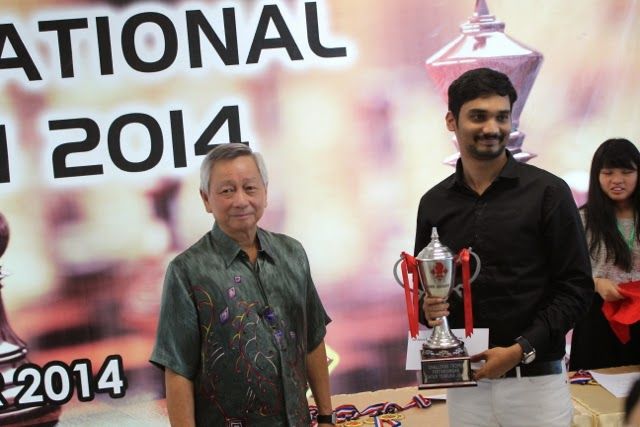 Nitin won the inaugural Johor Open in 2014 and was on pace with a decent start of 3.5/5, but the grueling schedule eventually took its toll. (Photo: Andrew Ooi)
Nitin won the inaugural Johor Open in 2014 and was on pace with a decent start of 3.5/5, but the grueling schedule eventually took its toll. (Photo: Andrew Ooi)It’s hard to argue against the philosophy that there should be no free points in a competition; therefore, pairing people with no opponents has its merit. It’s safe to say that such arbitrary pairings, even in the first round, allows the arbiter to impose his subjective judgment, where one would expect a more objective handling of the issue. Getting into the merits and demerits, from my experience, it almost always affects the Buchholz of the players; unless, one manages to win. In tournaments such as this one, with several contenders and no sharing of prizes, this has huge potential consequences. It’s also an undeniable fact that such a pairing between two top players goes principally against the concept of ‘Swiss Opens’.
Considering the above pros and cons, a possible suggestion is to find a middle path, wherein the players are forced paired, but in a way that’s in accordance with the idea behind the Swiss Opens. With such a small number of players who have no opponents, I am sure it won’t take much time to divide the players without opponents into two pools and pair the first seed in 'S1' against the first seed in 'S2' and so on. I am sure such a measure would undoubtedly make the tournament fairer to all.
Back to the tournament, I fell sick as early as the second day of the tournament. (My friends might go: ‘What’s new about that?’). Therefore, I fought only in games where I was forced to fight or got a winning position from the opening, making early draws in all other games.
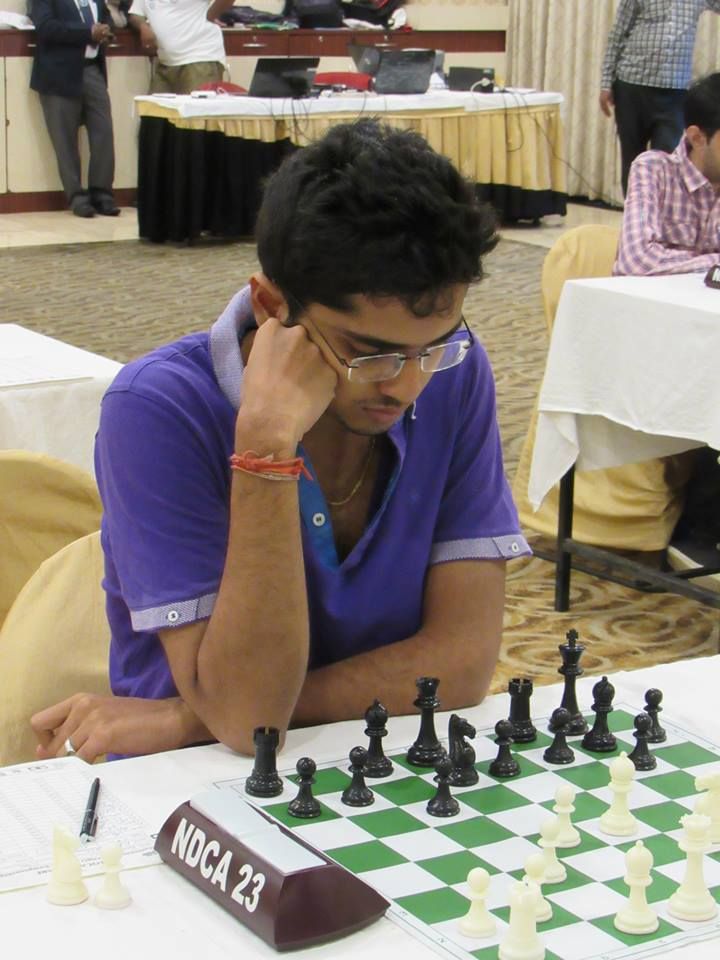
The initial Indian challenge to the championship came from IM Ramnath Bhuvanesh who stormed into the lead with 3.0/3. In the fourth round, facing the surprise 20-year-old FM Dang Hoang Son, he looked set to advance further as he got a huge positional advantage. However, Ramnath began to err in time trouble and the position worsened dramatically, allowing Dang Hoang Son to shoot into the sole lead.
The effect of Dang Hoang Son on his opponents in this tournament was similar to the experience of falling in love. They were all deceived by the apparent reality on the surface and were taken for a painful ride! Jokes apart, he accounted for three Indian scalps including GM Deepan Chakkravarthy in round three, IM Ramnath Bhuvanesh in round 4, and IM Anurag Mhamal in round five to storm into the sole lead with 5.0/5.
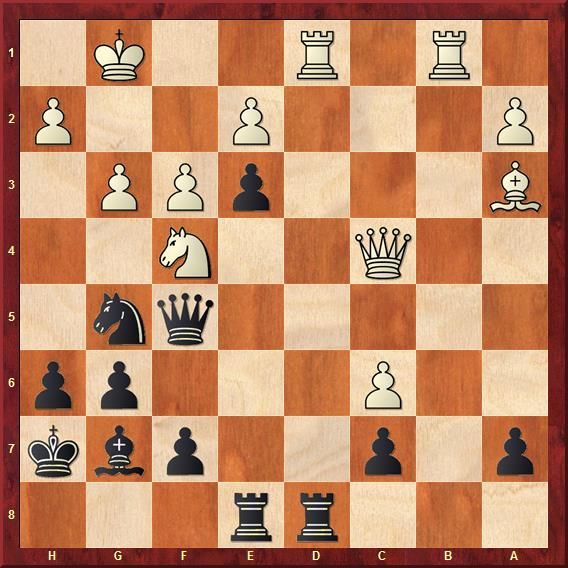
[Site "?"]
[Date "????.??.??"]
[Round "?"]
[White "Bhuvanesh, Ramnath"]
[Black "Dang, Hoang Son"]
[Result "0-1"]
[SetUp "1"]
[FEN "3rr3/p1p2pbk/2P3pp/5qn1/2Q2N2/B3pPP1/P3P2P/1R1R2K1 b - - 0 1"]
[PlyCount "11"]
Rxf4 $1 3. gxf4 Qxf4 4. Rb4 Ne4 $3 5. fxe4 (5. Rxe4 Rxe4 6. fxe4 Be5 $19) 5...
Qf2+ (5... Be5 $19) 6. Kh1 Be5 $19 0-1
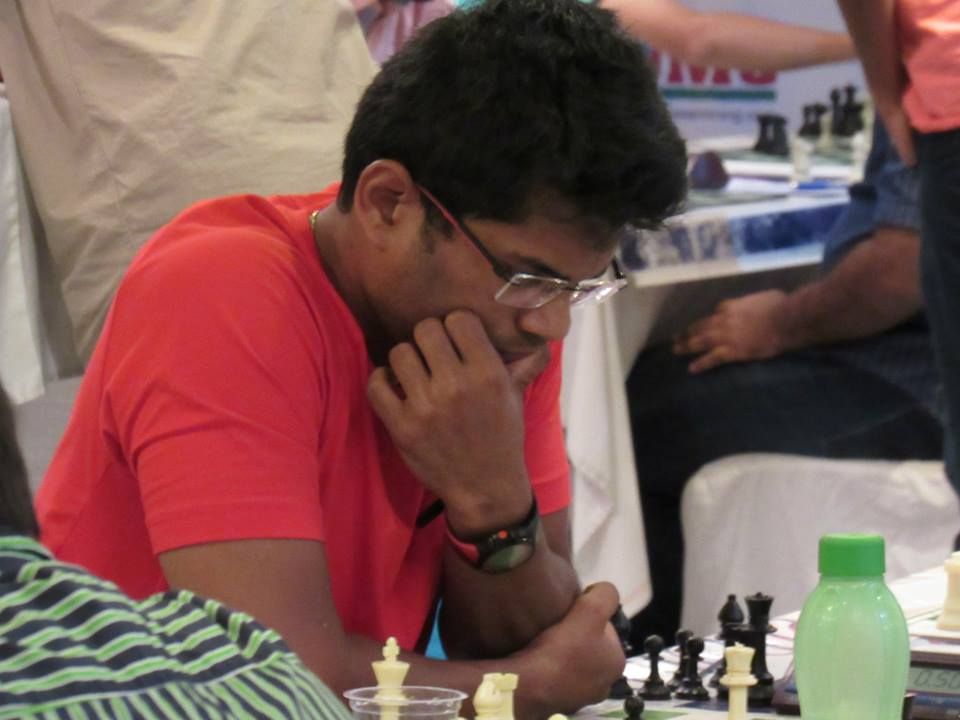 IM Anurag Mhamal finished seventh with 6.0/9 (Photo: Sa Kannan)
IM Anurag Mhamal finished seventh with 6.0/9 (Photo: Sa Kannan)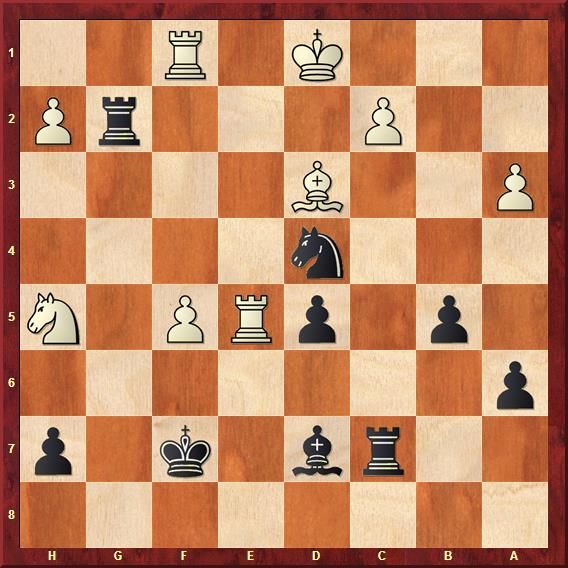
By the end of round six, Anurag and I were within striking distance, half a point away, of the leaders at 5.0/6. I managed to win, although not without difficulties. Apart from the first and last rounds, the sixth round was the only day where there was only a single game played on the day and the organizers, in continuance with tradition, hosted the players for dinner at a nice Indian restaurant.
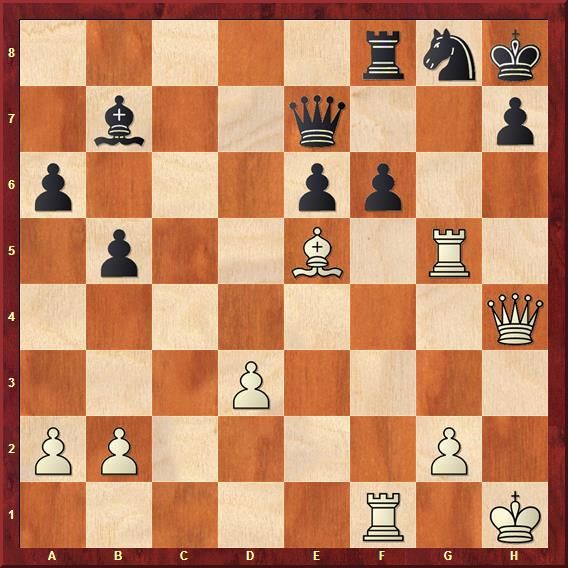
[Site "?"]
[Date "????.??.??"]
[Round "?"]
[White "Narayanan, Srinath"]
[Black "Mhamal, Anurag"]
[Result "1-0"]
[SetUp "1"]
[FEN "5rnk/1b2q2p/p3pp2/1p2B1R1/7Q/3P4/PP4P1/5R1K w - - 0 1"]
[PlyCount "3"]
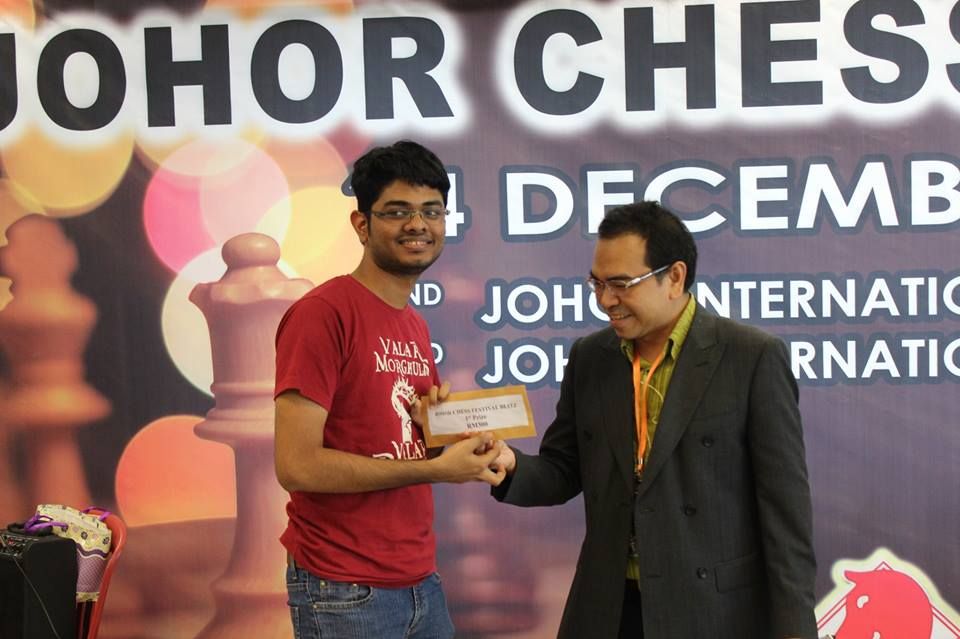
Despite seeing a lot of chess already, the Johor Chess Festival clearly wasn’t over yet. The Johor Causeway Open Rapid, a series of four back to back rapid events, took place from December 20-23. Graciously funded by the Kasparov Chess Foundation Asia Pacific, there was an open section as well the Challengers section. The challenger section was eligible only to those rated below 1800 (both FIDE and MCF ratings). There were 20 main prizes each in both open and challengers, and a total cash fund of 8000 ringgits (approx Rs.123,000) for the Open and 2450 ringgits (approx. Rs.37,500).
Fortunately, I was less fatigued than the other players and managed to win the first rapid and end up second in the last two rapids.
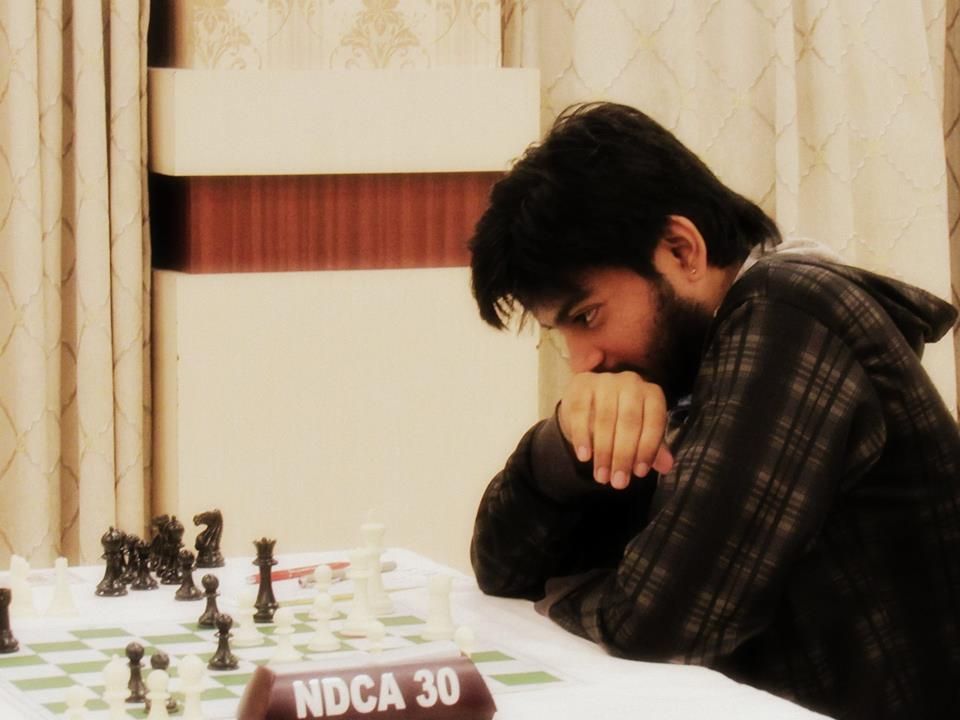
Penang Open and Johor Open are slated to be held in 2016 from December 03 to 17. Do join us!
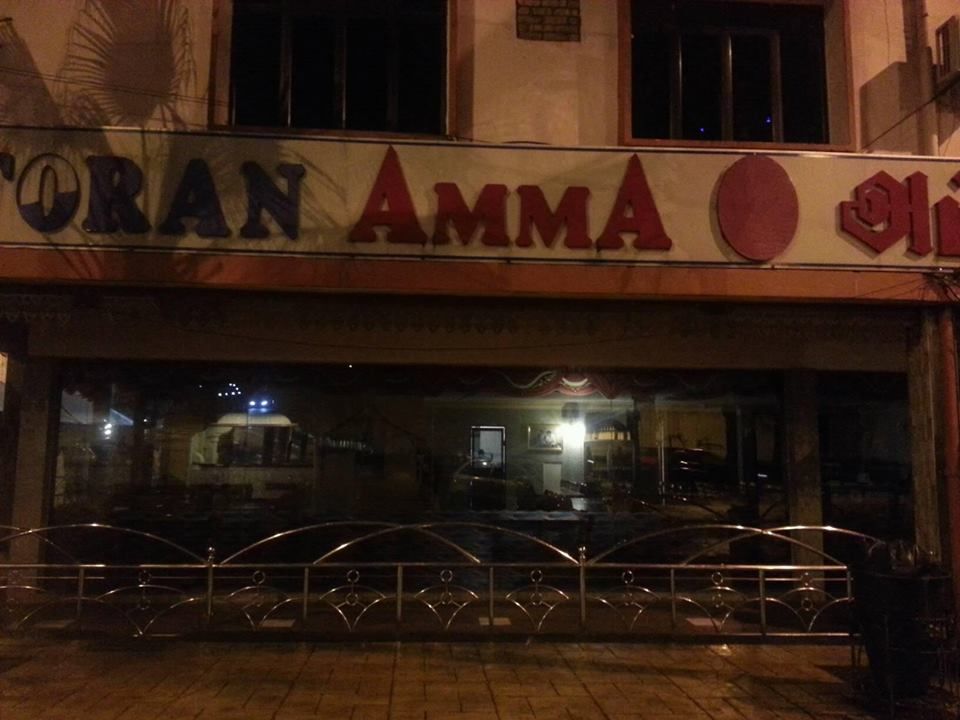 Restoran Amma: the restaurant where we had food every day (Photo: Andrew Ooi)
Restoran Amma: the restaurant where we had food every day (Photo: Andrew Ooi)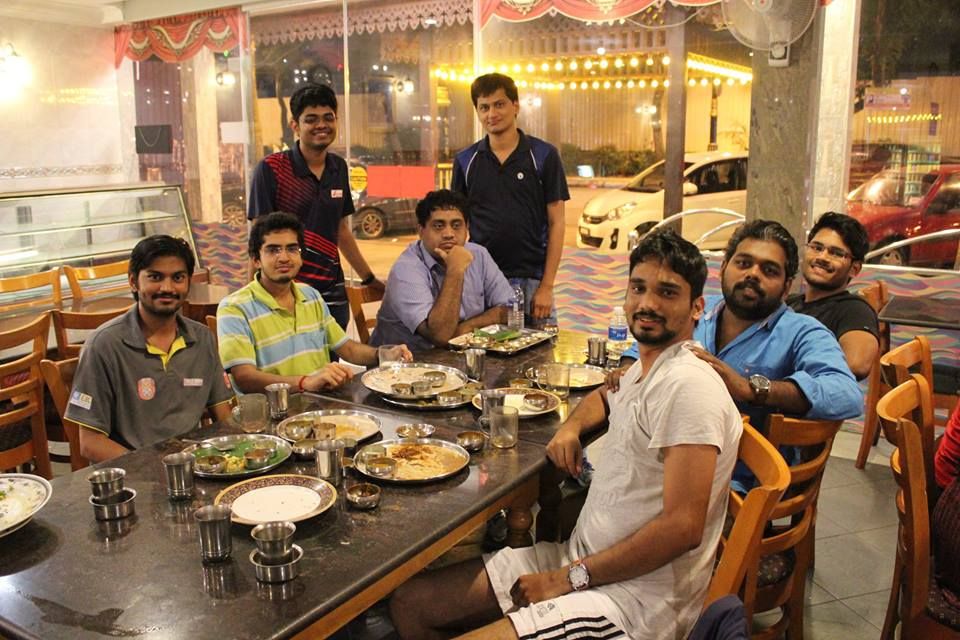
Final Rankings:
| Rk. | SNo | Name | FED | Rtg | RtgI | RtgN | Pts. | TB1 | TB2 | TB3 | Rp | n | w | we | w-we | K | rtg+/- | |
| 1 | 14 | IM | Ali Muhammad Lutfi | INA | 2400 | 2400 | 2345 | 7,5 | 0,0 | 51,5 | 42,00 | 2583 | 9 | 7,5 | 5,22 | 2,28 | 0 | 0,0 |
| 2 | 8 | GM | Bitoon Richard | PHI | 2438 | 2438 | 2378 | 7,0 | 1,0 | 52,5 | 39,50 | 2535 | 9 | 7 | 5,70 | 1,30 | 0 | 0,0 |
| 3 | 26 | FM | Dang Hoang Son | VIE | 2193 | 2193 | 2302 | 7,0 | 0,0 | 51,5 | 37,00 | 2525 | 9 | 7 | 2,82 | 4,18 | 0 | 0,0 |
| 4 | 3 | IM | Narayanan Srinath | IND | 2468 | 2468 | 2179 | 6,5 | 0,0 | 52,0 | 36,75 | 2536 | 9 | 6,5 | 5,55 | 0,95 | 0 | 0,0 |
| 5 | 18 | Vo Thanh Ninh | VIE | 2368 | 2368 | 2311 | 6,0 | 0,0 | 49,5 | 30,75 | 2438 | 9 | 6 | 4,75 | 1,25 | 0 | 0,0 | |
| 6 | 12 | IM | Ramnath Bhuvanesh.R | IND | 2423 | 2423 | 2373 | 6,0 | 0,0 | 48,5 | 30,50 | 2387 | 9 | 6 | 6,06 | -0,06 | 0 | 0,0 |
| 7 | 15 | IM | Anurag Mhamal | IND | 2390 | 2390 | 0 | 6,0 | 0,0 | 48,0 | 29,50 | 2375 | 9 | 6 | 5,46 | 0,54 | 0 | 0,0 |
| 8 | 9 | GM | Cao Sang | VIE | 2433 | 2433 | 0 | 6,0 | 0,0 | 45,0 | 26,75 | 2256 | 9 | 6 | 7,19 | -1,19 | 0 | 0,0 |
| 9 | 25 | IM | Praveen Kumar C | IND | 2231 | 2231 | 0 | 6,0 | 0,0 | 44,0 | 27,25 | 2345 | 9 | 6 | 4,07 | 1,93 | 0 | 0,0 |
| 10 | 4 | IM | Nguyen Van Huy | VIE | 2465 | 2465 | 2438 | 5,5 | 0,0 | 49,5 | 27,75 | 2445 | 9 | 5,5 | 5,57 | -0,07 | 0 | 0,0 |
View the complete standings here.
About the author:
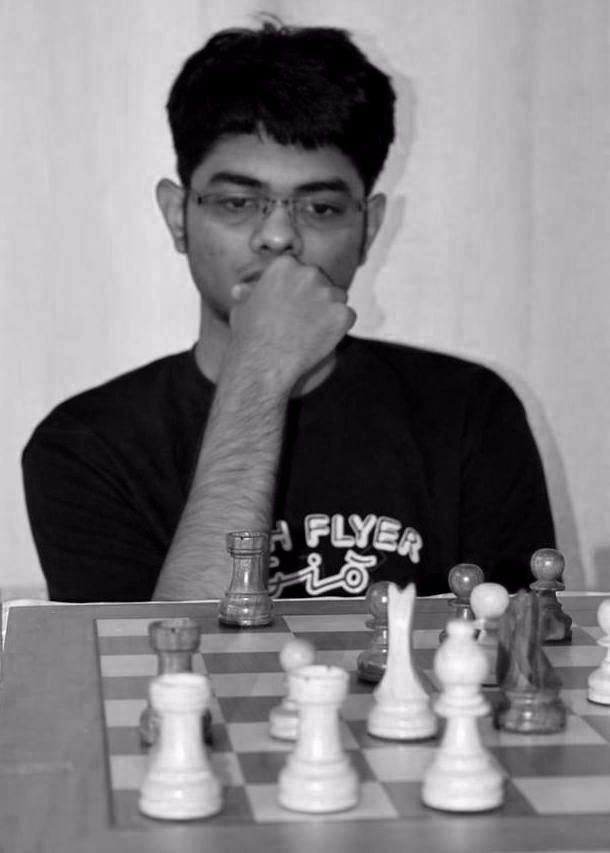
Narayanan Srinath, born on February 14, 1994, in Chennai, India, began playing chess at the age of five. At the age of eight with an initial rating of 2088, he became the then youngest rated player in the country. A former World Under 12 champion, at the age of fourteen he became an International Master and has shown surprising and unswerving loyalty to the title ever since. He has numerous achievements to his credit and likes to participate in a lot of tournaments all around the globe. He is a critical thinker and thinks deeply not only about the game of Chess but life itself.
Visit 'www.catur.org' for information on all the Malaysian chess events and happenings.
Photos by Andrew Ooi and Sa Kannan
